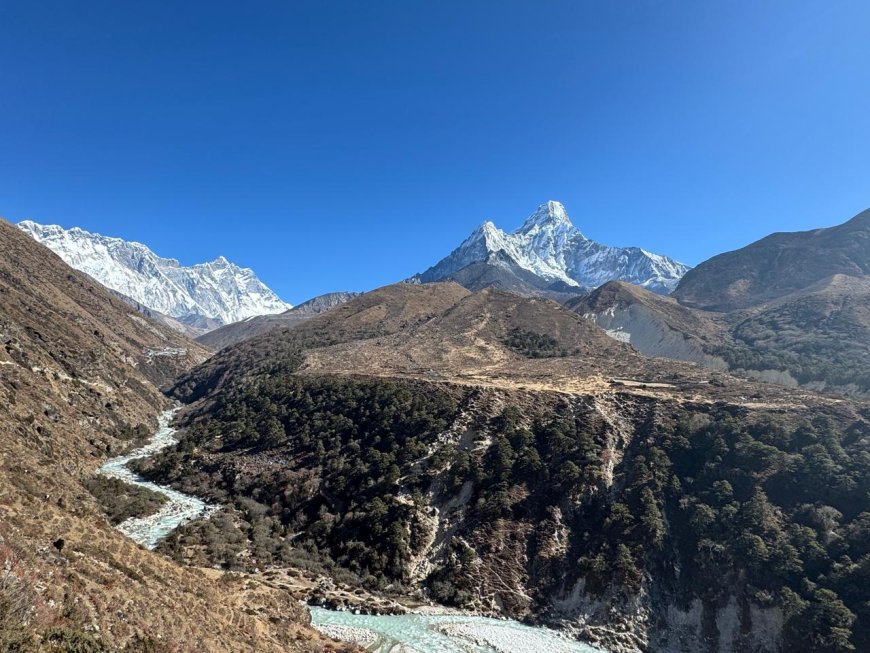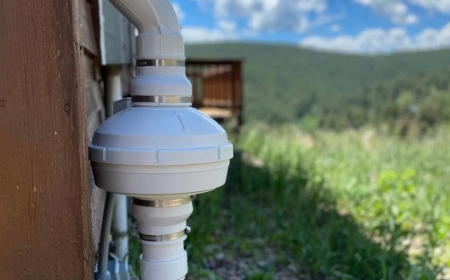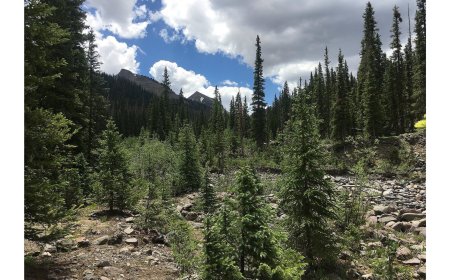How to Trek Everest Base Camp During the Off-Season: Pros and Cons
Walk where mountaineers begin their Everest summit attempt — at base camp.

Trekking to Everest Base Camp is an amazing experience, but picking the right time to go can change how your trip goes. The busiest times to trek are usually from March to May and September to November. But there are reasons to consider going during the off-season, which is from December to February and June to August. Each choice has its ups and downs.
One big upside to going in the off-season is the lack of crowds. During peak times, Base Camp gets super busy with trekkers from all over. When you go off-season, it's a lot quieter. You can enjoy the stunning views of the Himalayas without dodging a bunch of people, making your trek feel more personal and calm.
Everest Base Camp Trek Itinerary Plus, trekking during the off-season can save you some money. Fewer trekkers mean that places to stay and flights might cost less, so its easier on your wallet if you want to see Everest without breaking the bank. The cooler weather and emptier trails can also make for a more laid-back trek.
On the flip side, there are downsides to consider. The weather can be pretty unpredictable in the off-season, especially in winter when snow and freezing temperatures can make trails tricky. You might also find fewer services, like closed tea houses and not as many guides around, which can complicate things. During the monsoon period, trails can get muddy and slippery, which could lead to more accidents.
So, trekking to Everest Base Camp in the off-season can be a unique experience, but youll need to plan carefully and be aware of the risks.
Best Time to Trek Everest Base Camp: Peak vs. Off-Season
When to trek to Everest Base Camp boils down to what you want. If you're cool with crowds and want better weather, the busy times are from March to May and September to November. Youll get clearer views, but expect a lot of fellow trekkers. On the flip side, if you prefer fewer people and lower prices, the off-season from December to February or June to August could work for you. Just keep in mind that the weather can be rough, and some services might not be available. If youre okay with the unpredictability, go for the off-season. But if you want the best weather and trail conditions, stick to the peak season.
How to Acclimatize for the Everest Base Camp Trek
Getting your body used to the altitude is really important for a successful trek to Everest Base Camp. Youll be hiking over 5,300 meters where the oxygen is thinner, so taking it slow helps reduce the chance of altitude sickness. Gradually climb, take enough rest days, and drink plenty of water. Its good to spend a couple of nights at higher altitudes like Namche Bazaar and Dingboche before moving on. Just remember to pace yourself, and youll have a much better experience without the stress of altitude sickness.
Everest Base Camp Trek Packing List: Essential Gear Youll Need
Packing right for the Everest Base Camp trek is crucial since you'll be facing tough conditions and long days on the trail. Youll need good trekking boots, warm layers, and a sleeping bag that can handle freezing temperatures. Dont skip rain gear, a headlamp, and a reliable daypack. A trekking pole can help on rough paths, and sunscreen and sunglasses are must-haves to protect from the sun. Also, pack water purification tablets, snacks, and a basic first aid kit. Being thoughtful about your packing can boost your comfort and safety on the trail.
How to Stay Safe During the Everest Base Camp Trek
Staying safe is key on the Everest Base Camp trek. The altitude, tough paths, and isolated areas mean you need to plan. Keep acclimatizing to avoid getting sick by going up slowly and taking breaks. Drink plenty of water and wear the right gear for the cold and rainy weather. Protect your skin from sunburn, too. Having a local guide can help a lot when finding your way and dealing with any emergencies. Make sure you have a first-aid kit and all your necessary medical supplies. With smart preparation, you can focus on enjoying the trek without worrying too much.
The Impact of Weather on the Everest Base Camp Trek
The weather can change how your time on the Everest Base Camp trek goes. During peak seasons, like March-May and September-November, youll likely get clearer skies and mild weather, which is great for trekking. Still, keep in mind that conditions can shift quickly, and temperatures can drop below freezing at night, especially higher up. In winter, expect snowstorms that can make trails tricky. The monsoon season from June to August brings heavy rain, turning paths muddy and increasing the risk of landslides. Stay updated on the weather and adapt your plans to stay safe and comfortable while trekking.
Tips for Trekking to Everest Base Camp on a Budget
Trekking to Everest Base Camp can get pricey, but there are ways to save without losing out on the experience. Try going in the off-season, like December to February or June to August, when prices are lower. Booking your flights early can also snag you cheaper deals, and flying into Lukla from Kathmandu instead of taking a helicopter can help, too. When you're on the trail, opt for teahouses; they're more affordable than fancy lodges. Bringing your snacks and drinks is a smart move since prices at high-altitude shops are marked up. Hiring a local guide or porter is another good way to save money while getting the support you need. With some planning, your trek can be much more wallet-friendly.
How to Handle Altitude Sickness on the Everest Base Camp Trek
Altitude sickness is a common issue on the trek to Everest Base Camp, but you can manage it with some simple tips. You might feel symptoms like headaches or dizziness because of lower oxygen levels above 2,500 meters. To help prevent it, take your time acclimatizing by resting and avoiding rapid climbs. Drink lots of water, steer clear of alcohol, and eat hearty meals to keep your energy up. If you start feeling worse, its crucial to head down to a lower altitude. Bringing altitude sickness meds like Diamox and checking with your doctor before you go can also be helpful. By keeping these tips in mind, you can reduce your chances of getting sick and enjoy the trek.
The Best Trekking Routes to Everest Base Camp
The usual route to Everest Base Camp kicks off in Lukla, but other paths might suit your style or fitness level better. The classic route from Lukla is popular for its gorgeous views of the Himalayas, including Everest, Lhotse, and Makalu. If you want a quieter trek, consider starting from Jiri or Salleri. This adds a few days to your trip, but youll enjoy a more relaxed atmosphere away from the busy Lukla trail. Some people also like to take a side trip to Gokyo Lakes or Cho La Pass for a little extra adventure. Each path has its unique sights and experiences.
The Role of a Guide and Porter on the Everest Base Camp Trek
You can trek to Everest Base Camp on your own, but hiring a guide and a porter makes things easier. Guides know the trail well, help you navigate tricky spots, offer insights into the local culture, and are invaluable in case of emergencies. A porter can carry your heavy backpack, making those long days on the trail a bit less taxing. This lets you soak in the scenery without getting too worn out. Plus, hiring local guides and porters helps support the community and promotes responsible trekking. Whether youre new to this or an experienced hiker, having a guide and porter can greatly improve your trek.
10. How to Get Ready for the Physical Demands of Everest Base Camp
Getting ready for the challenges of Everest Base Camp is key to having a successful trek. Youll spend long days walking at high altitudes, often on tough terrain. To prepare, focus on building your cardio with activities like hiking, running, or biking. Strengthening your legs and core with exercises like squats and lunges, and practicing with a backpack during your training hikes, will help. If you can, try hiking at higher elevations to mimic trek conditions. Also, work on your mental toughness by pushing through tough workouts. Staying consistent with your training will make sure youre ready for the demands of the trek.
Is It Better to Trek to Everest Base Camp in Spring or Fall?
Both spring (March to May) and fall (September to November) are great times to trek to Everest Base Camp, but each has its perks. Spring brings warmer weather, typically around 1015C during the day, making it more pleasant for walking. The days are longer too, and youll get clear skies for amazing views of the mountains. Plus, there are local festivals happening, adding some culture to your trip. In fall, the temperatures are cooler, but the trails are less busy, so it's a good option if you prefer quieter hikes. The weather stays stable, with clear skies perfect for photography. Ultimately, it comes down to whether you want warmer weather and more people or cooler temperatures and solitude.
Why Do People Stop at Everest Base Camp?
Many people trek to Everest Base Camp to soak in the incredible views of Mount Everest and the other peaks nearby. It's a key spot for climbers getting ready to tackle Everest, so trekkers come to experience the high-altitude setting and feel a sense of achievement in making it there. Reaching Base Camp is often seen as a big deal, and its a chance to enjoy the stunning scenery. The trek can be tough, but it also lets you connect with the local Sherpa culture and see life in the Himalayas without the risks of climbing to the summit.
Which Month Is Best for Everest Base Camp Trek?
The ideal months for trekking to Everest Base Camp are March to May and September to November. During these times, the weather is generally good with clear skies and mild temperatures. Spring (March-May) tends to be the busiest since its warm and offers great views. Fall (September-November) is also excellent since it's right after the monsoon, which means clearer trails and dry weather. The summer months (June to August) are rainy, making trails slippery and increasing the risk of landslides, while winter (December to February) brings the cold and snow, which isn't great for trekking.
Is the Everest Base Camp Trek Risky?
While trekking to Everest Base Camp isnt as risky as trying to climb Mount Everest, it does have its dangers. Altitude sickness is a major concern since you'll reach heights over 5,300 meters, where there's less oxygen. Symptoms can include headaches, dizziness, and nausea, so its important to allow your body to adjust. The trek itself is physically demanding, with some rough terrain and shifting weather. But with the right prep, training, and a good plan, you can reduce the risks. Make sure you have the right gear, stay hydrated, and give yourself time to acclimatize to stay safe.
In Summary
The Everest Base Camp trek is an amazing experience with breathtaking views and a chance to dive into Sherpa culture. Whether you go in spring or fall, both times are great, with clear skies, moderate temps, and fewer crowds. Making it to Base Camp is a rewarding accomplishment without the dangers of climbing Everest. While there are some risks, mainly due to altitude and exertion, proper training and prep can help you tackle these challenges. Overall, this trek is an unforgettable journey for anyone looking to explore the heart of the Himalayas.





























